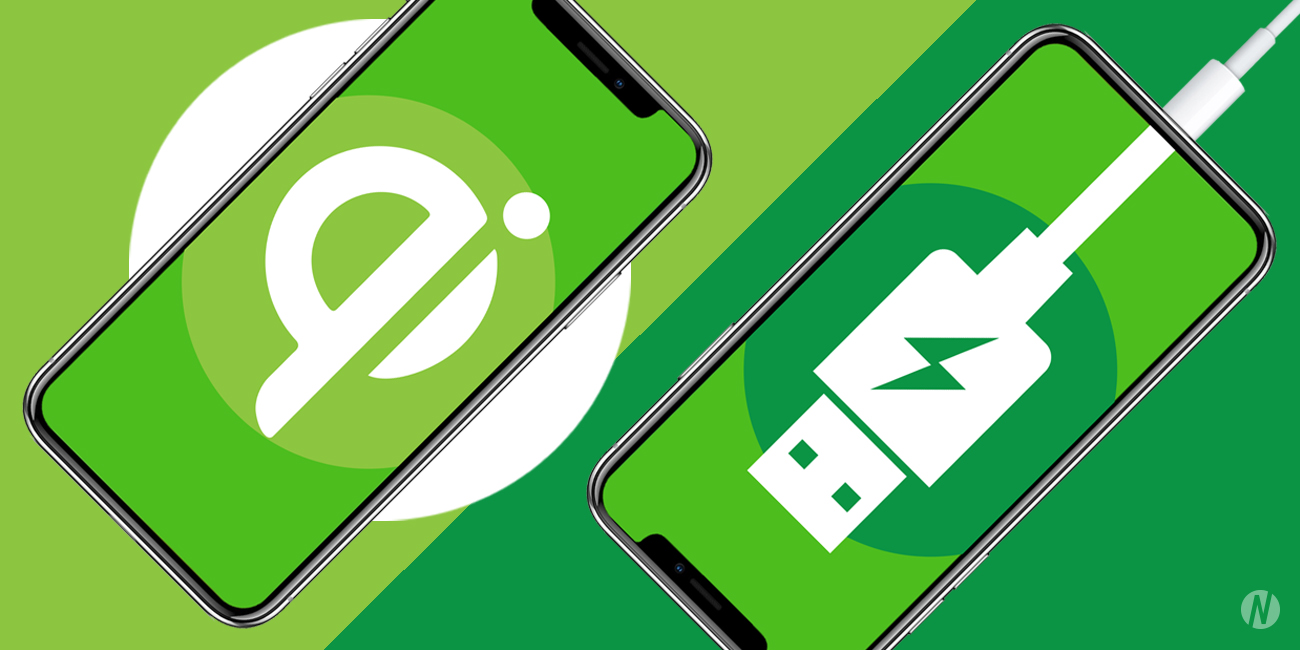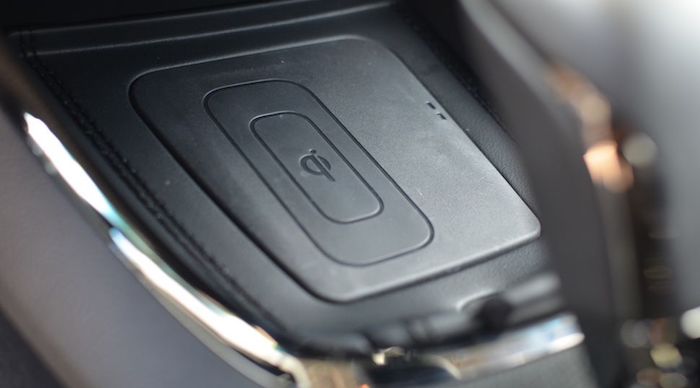The Great Debate: Wired or Wireless Charging?
I’ll be completely honest, when I first heard about wireless charging I was immediately skeptical...
“You have to lay your phone down?” I thought. “What if I want to use my phone while it’s charging?” It seemed like more of an interesting gimmick rather than something the mainstream masses would adopt. At least until far-field wireless charging is available - allowing you to charge your phone from across the room.
Asking around, it seemed most of my friends and colleagues had similar concerns. Not being able to lay in bed with your phone charging while browsing Instagram, sending snapchats, or getting lost in Wikipedia articles appeared to be a major deal breaker.
But when I heard the news about Apple last year my interest was peaked. I knew I had to at least give wireless charging a chance. So when I upgraded to the iPhone 8 last year I decided to buy a Qi wireless charger to go along with it. (Remember, Qi and Wireless Charging are Synonymous) I kid you not, I haven’t used a wired charger since. It’s not like my concern of not being able to use my phone while charging vanished, I just realized wireless charging should be used in a different way.
Forget What you know
What I mean is this - forget worrying about using your phone while it’s charging and instead simply set your phone on the Qi charging pad whenever you’re not using it. This way you keep your phone constantly topped off and never have to worry about being low on battery.
Where wireless charging really becomes a benefit for consumers is when it becomes ubiquitous, when everywhere I go I don’t worry about chargers coming with me or running out of power. Every place I’m going I can just put my phone down and easily charge it. I don’t have to plug it in or anything.
Now, I’m sure your thinking “Okay, well obviously you like wireless charging… your company provides it to hotels!” And you’d be right, we’ve bought in to wireless charging so much that everyone of our products has it. (along with USB Ports) Loyalties aside, here at Nonstop we pride ourselves on being unbiased and presenting people with facts to make an educated decision. So instead of just talking up wireless charging and bashing wired charging, we looked at 6 different factors (Charging speed, Compatibility, Convenience, Mobility, Design, and Longevity) to help you make an informed purchasing decision.
Tips for Hotels: The amount of Qi compatible phones is growing rapidly, but many older phones do not support the feature. It’s important to appeal to all your guests by getting a solution that offers options for wired and wireless charging.
Wired vs Wireless Charging Speed Comparison. Published by Andrew Martonik at Android Central
Charging Speed
Right off the bat we look at one of the most important decisions when purchasing a charger - charging speed. And wired charging currently has a significant leg up compared to wireless. (See, told you we were unbiased) One Android user compared a Fast Wired Charger to a Fast Wireless Charger. The results? The wired charger went from 0-100% in 100 minutes - a full 50 minutes faster than the wireless version. So if charging speed is what you care about the most, we’d recommend a wired charging cable like this for android.
If you’re an iPhone user looking to take advantage of Apple's new fast charging iPhones - which they claim can charge your phone up to 50% in 30 minutes - you’ll need to shell out some extra cash to do so. Specifically, you’ll need a USB-C to Lightning cable, and a power brick that supports the USB-C Power Delivery (USB-C PD) specification.
Advantage: Wired Charging
Fun Fact: The 15W Wireless Charger charged at the exact same rate as the 10W. Meaning higher wattage doesn't always mean faster charging speeds.
The familiar Qi Logo is making it's way into cars
Convenience
One huge benefit of wireless charging is how easy it is to just drop it on the Qi pad and get a charge. No need to fumble around in the dark or turn on a light to find a cable. Also Qi pads reduce the amount of clutter associated with charging cables.
This technology is coming fast to cars, homes, hotels, and offices - and while we may still be hunting for power for years to come - it will get much easier. Because rather than searching for the right cable and a wall outlet off in some corner, we will just be looking for a friendly surface and the familiar Qi logo to set our phones on
Advantage: Wireless Charging
Compatibility
With the battle between competing wireless charging standards ending and the industry settling on Qi - we are left with a universal charging standard that mirrors what WiFi is for wireless internet. This is huge for the industry and consumers alike. You can take your iPhone X and drop it on a wireless Samsung charger from 2012 and it will get the job done. That easy. iPhone users won’t ever have to give that familiar glare to their android friends when they pull out a micro-USB cable. All you need is a Qi wireless charger and you’re good to go.
Advantage: Wireless Charging
Wireless Charging Pad with Cork Finish by Grovemade
Design
Here is where I think wireless charging truly separates itself. If you read our last blog post you’d know us here at Nonstop are design enthusiasts. And, simply put, the design of wired chargers don’t even come close to wireless chargers. Wireless chargers can be built into lamps, desks, chairs, they can have different finishes such as cork, wood, marble, leather, and much more.
This makes it a perfect option to put in your hotel or home because you can choose a design that matches your decor and guest-rooms. And there’s nothing us millennials appreciate more than a well designed room that takes EVERYTHING into account. (okay, we like meal delivery kits a bunch, too)
Advantage: Wireless Charging
Mobility
Another one in the column for wired charging is the ease of which you can bring your charger with you. While some wireless charging pads are small enough to fit in your suitcase or purse, it’s not the same as simply wrapping your cord around the power adapter and tucking it away when you’re on the go. And, as mentioned earlier, wired charging gives you more freedom to use your phone in bed while charging.
Advantage: Wired Charging
The All Too Familiar Ruined Lighting Cable
Longevity
When I speak of longevity I am talking about the longevity of the charger, charging port on your phone, and your phone battery. The first two undeniably favor wireless charging. I can’t tell you how many lighting cables I’ve had to replace. And it appears I’m not the only one who believes the out of box iPhone charger might be the worst thing ever created.
As for the longevity of your phone battery, this one is up for debate. Apple claims that each phone battery is designed to work at its optimal level for 500 charge cycles - once you hit the 500 cycles performance drops to about 80% of its original level.
Now, if you use your wireless charging pad in the way I described above (topping your phone off whenever you get a charge) you could conclude that wireless charging is actually harmful for your battery. Because you are blowing through those 500 charge cycles more quickly since you don’t let your phone battery get down very low.
But, industry research has revealed that your battery may last longer if you don’t let it go below 50%. So in other words, “topping your phone off” may preserve the life if your battery. While we won’t make a definitive decision one way or another - it’s clear that wireless charging will at least preserve the life of your charging port and charger.
Advantage: Wireless Charging
Conclusion
Regardless of what your preferred charging method is, if you have a Qi compatible phone, I implore you to at least give wireless charging a shot. What it lacks in speed and mobility it more than makes up for in convenience, design, and shelf-life. And with more than 85% of phones sold today supporting Qi, it’s only a matter of time until wireless chargers become mainstays in hotels, restaurants and other public spaces. If you need some help picking which one is right for you, take a look at some of these. The designs are simply spectacular!







